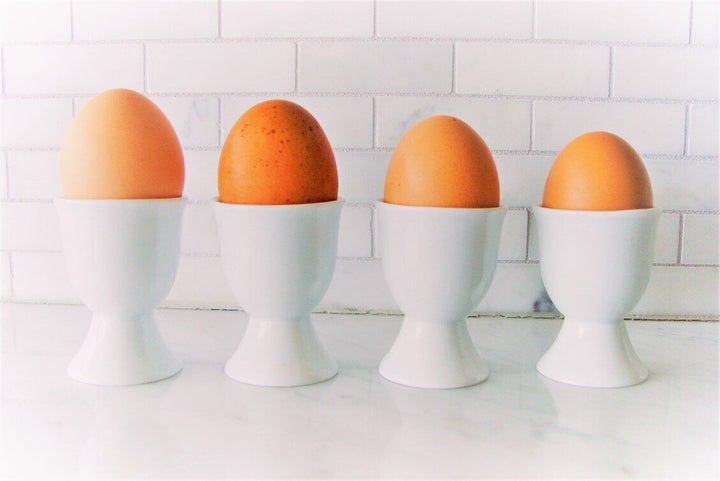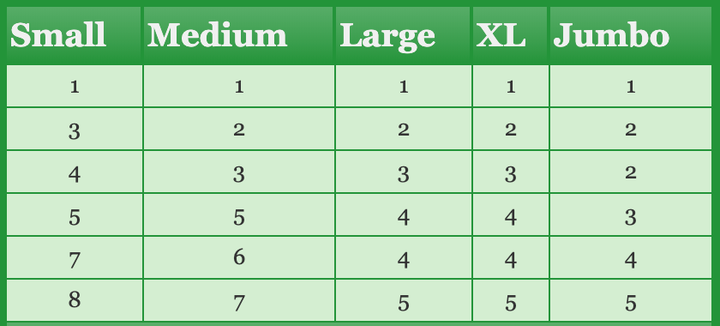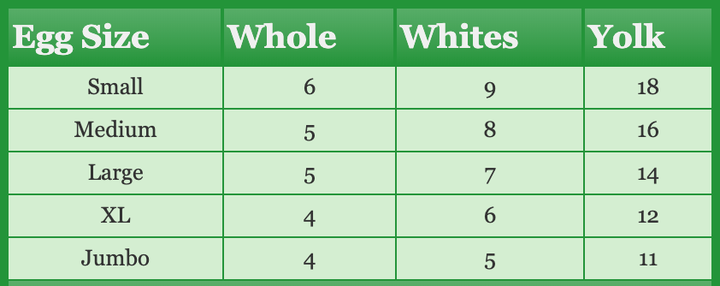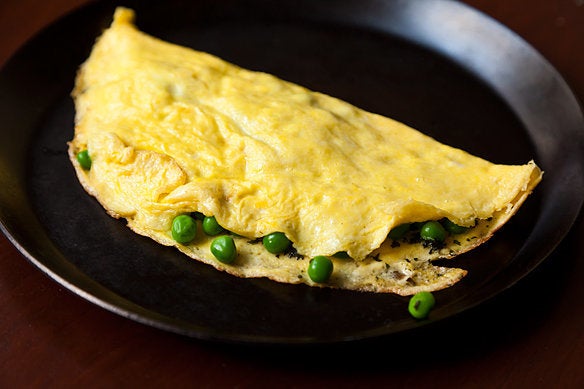Have you ever wondered why a particular batch of cookies, which you’ve made a thousand times, doesn’t turn out as expected? Or why your cake rose too high, only to fall? Maybe your custard tasted a bit egg-forward. It could be because of the size of your eggs.
When it comes to baking, exact ingredients are essential and while there are several sizes of eggs available at the grocery store, recipes rarely call for a specific size. In the United States, modern sizes found in stores are (from smallest to largest) peewee, small, medium, large, extra-large (or very large) and jumbo.

The size of the egg is determined predominantly by the age of the bird; generally speaking, the older the chicken, the larger the egg. There are, of course, different types of eggs including duck, goose and quail, all favored for their varying textures and flavor, but we will focus on the more commonly used chicken egg.
The good news is that large eggs are the standard used in most recipes and cookbooks. Using a different size, without making an adjustment, will affect texture, flavor balance and consistency, and in most cases will provide an unsatisfactory result, according to The Incredible Egg, a website founded by the American Egg Board.
A little science behind it: Eggs provide both volume and structure when used in baking. When air is incorporated into the protein molecules in eggs (as in mixing), the proteins unwind and stretch to form an elastic web that encases the air bubbles, which expand during baking.
The delicacy of an egg’s ratio in a recipe is best demonstrated in cake baking: Too few eggs will produce an overly compact cake that doesn’t hold together, while too many will result in a spongy, rubbery mess. An oversized egg could result in a cakey cookie and undersized eggs can produce crumbly muffins.
But what happens when you only have extra-large or jumbo-sized eggs on hand? The following charts provided by The Incredible Egg may come in handy for at-home bakers when substituting eggs of varying sizes. Note that the size difference becomes more apparent when the recipe calls for three or more eggs, as illustrated below.
Egg substitutions:

1 cup equivalents:

According to Bridget Charters, a culinary producer for NYC Wine and Food Festival and culinary director for Tom Douglas’ Hot Stove Society, when baking in larger volumes, it is best to weigh your eggs for accurate results. The size of an egg is based on the total weight of the dozen (which vary in size per carton), as determined by the Department of Agriculture.
As baker Erin McDowell told MSN: “Eggs are graded by their size, and their weights change dramatically from one size to another; since baking recipes depend on more precise ratios and formulas, using a small egg when a large egg is called for can result in serious alterations in the final product.” The chart below provides the weights for both large and extra-large eggs as well as their individual components.
Weight of one large or extra-large egg and its components:

For the at-home baker and smaller-scale batches, a kitchen scale may not be necessary. Charters recommends using the scramble method. Start by cracking the egg(s) into a bowl and whisking until scrambled; pour out the proper amount of egg liquid needed for the recipe using a liquid measure. Add or remove whisked egg to meet the recipe’s requirement. One large egg equals 3.5 tablespoons.
The scramble method will also work for recipes that call for certain parts of the egg to be prepared separately. Instead of scrambling the whole egg, separate the yolk or white from the egg(s) you have on hand and whisk together in a bowl. Proceed to measure the correct amount needed for the recipe with a liquid measure.
Next time you grab a carton of eggs from the supermarket, take note of the size ― especially if you plan to do some baking!
